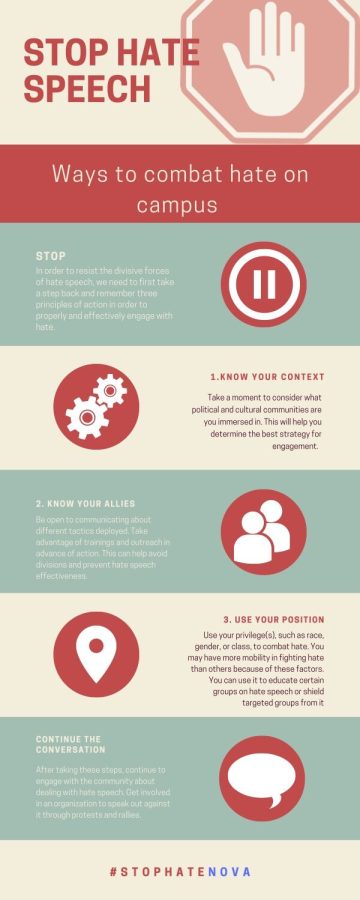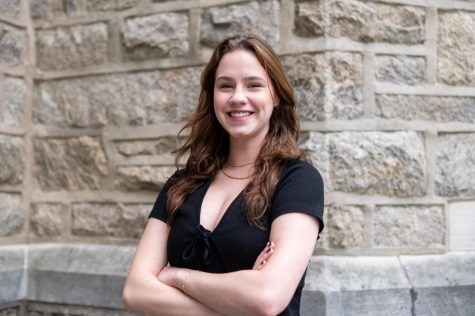Students in Communications Class Create Projects to Call Out Hate Speech
The recommendations are based off the teachings of the course.
December 15, 2021
Part of Billie Murray, Ph.D.’s new Rhetoric course included allowing her students to develop their own projects to spread the messages of the class.
Many of the students’ used their projects to educate other students on campus about hate speech and its relation to the First Amendment. Others utilized their projects to emphasize the issues of hate speech particular to the University.
Projects ranged from infographics, to stickers made to cover up hate speech, to podcasts speaking about hate speech, to art pieces. Two students in the course even traveled to Tennessee to speak to activists outside an alt-right convention.
Junior Lauren Jones decided to create a fictional story about hate speech within elementary and middle schools. The story will be from the view of a victim of hate speech.
Jones was inspired by her work at the Boys and Girls Club of Oyster Bay East Norwich. She also wanted to take a different direction from her classmates and choose a new audience than college students.
“I wanted to switch up the target audience to younger students in hopes that being exposed to these difficult topics earlier in life would benefit their futures,” Jones said.
Jones, a Communication major, hopes the story provides her audience with a significant amount of information regarding racism and hate speech. Jones believes that kids would benefit from having these discussions early on to better comprehend the heavy topic.
Another student, Holly Hanson, also chose a project not intended for college students. Hanson will create a comprehensive lesson plan for a high school history class. The lesson plan would focus on the First Amendment and free speech rights.
Hanson’s background and plans for the future have helped her with this project.
“U.S. History class is typically the venue in which Americans learn about the United States Constitution,” Hanson said. “I, for one, hated history class, but I did and do love school. So much so that my post-graduate career will be as a teacher. I am familiar with lesson planning and teaching techniques.”
Hanson hopes that this project will act as practice for lesson planning but will also provide insight about the First Amendment that many may not even had.
“I learned how little I know about our nation’s founding principle,” Hanson said. “I think I’m leaving with even more questions, which is what a good education or course should do.”
Kat Burke, a Communication major, has decided to go out of her comfort zone for her project. Burke decided to create political cartoons to draw attention to the issues of hate speech within the U.S.
Burke used a digital design program to create the cartoons, since she admitted to not being too involved in the arts. However, Burke expressed the additional skills she learned since choosing a project not within her already developed skills.
Sarah Mcavoy, a Political Science major, focused her project on the Supreme Court cases related to hate and free speech. Mcavoy decided to create a website with outlines of major cases. The website provides not only the facts of the cases but the impacts of the rulings.
Since hate speech remains unregulated in the U.S. by any form of legislation, the courts are responsible for interpreting existing law for every case of hate speech.
“Since technically there is no hate speech regulation, yet Supreme Court cases set precedents of how the US should proceed legally with cases like these, I thought it would be interesting to have one place where these important cases are placed cohesively,” Mcavoy said. “An overall goal is for my audience to be able to trace how although we do not regulate hate speech, the justice system does shape how we address it and those nuances are also rooted in white supremacy and hypocrisy.
More projects will be available for viewing around campus. Students in the course plan to post their flyers and infographics for other University students to see.



